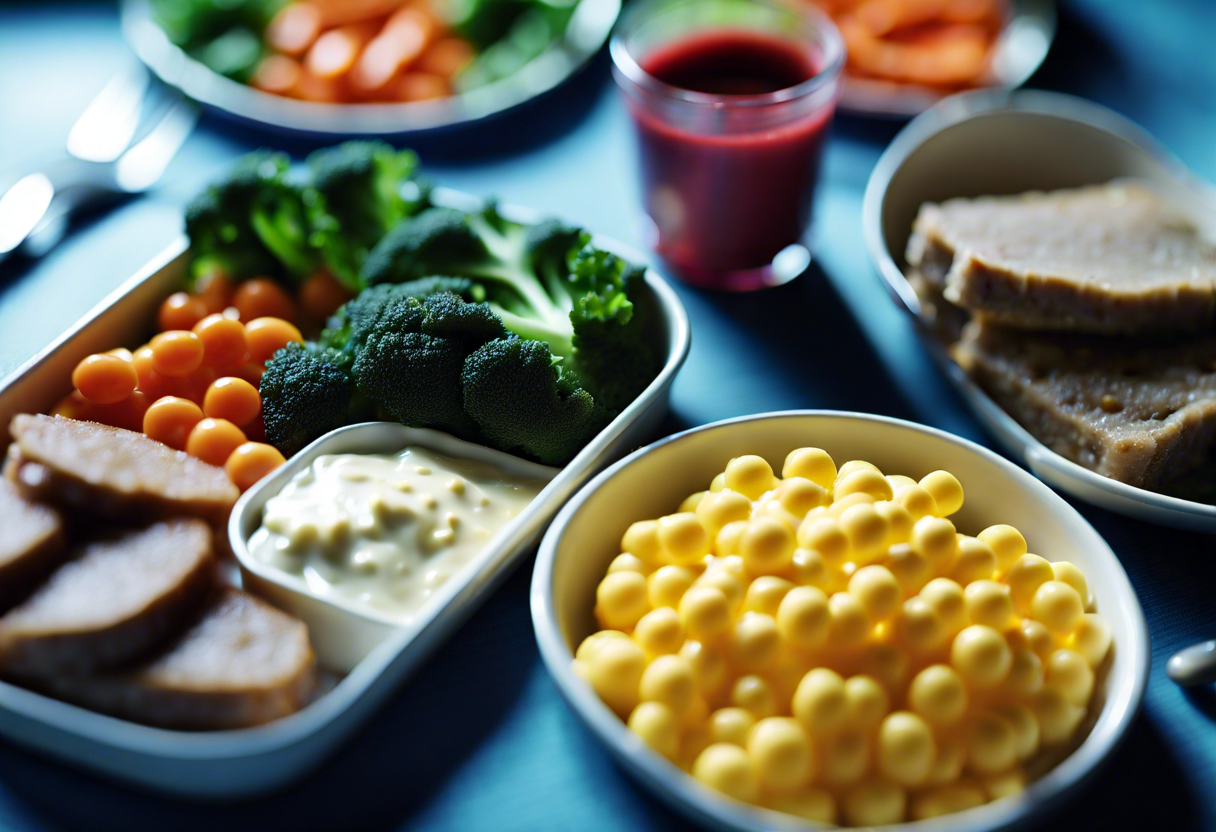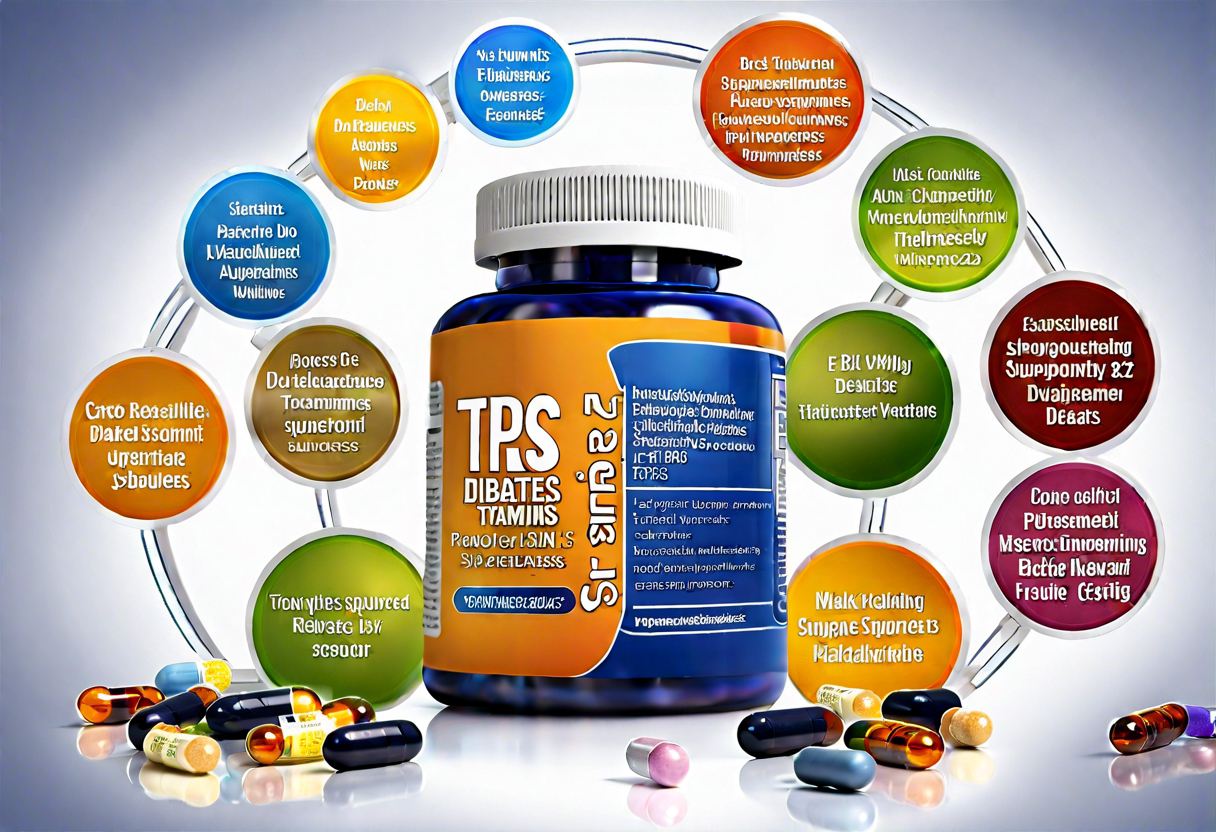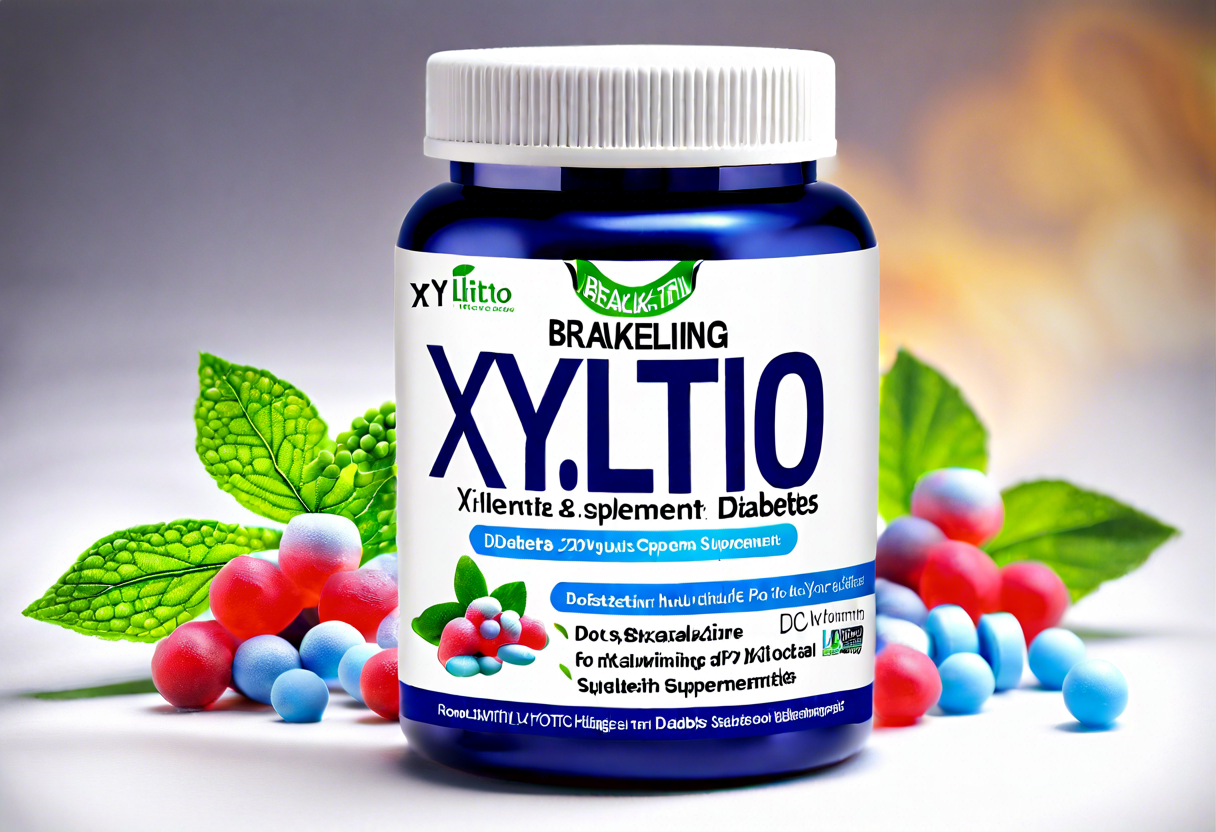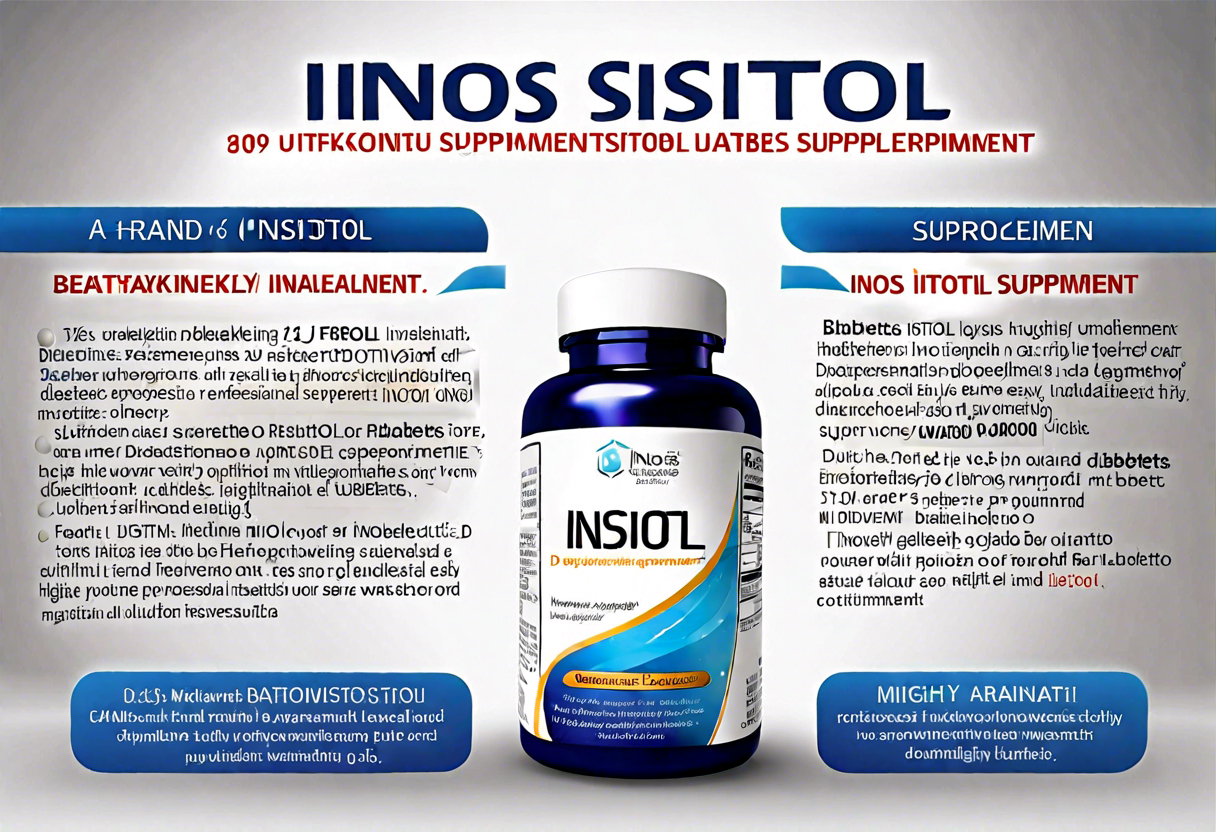Benefits of Meal Planning for Type 2 Diabetes Reversal
A well-designed meal plan is an essential tool for managing type 2 diabetes and can even help in reversing the condition. By carefully planning your meals, you can control your blood sugar levels and improve your overall health. Here are some key benefits of meal planning for type 2 diabetes reversal:
1. Blood sugar control: Meal planning allows you to choose foods that have a minimal impact on your blood sugar levels. By including low glycemic index (GI) foods such as whole grains, lean proteins, and non-starchy vegetables in your meals, you can prevent spikes in blood sugar and maintain stable levels throughout the day.
2. Weight management: Obesity is a significant risk factor for type 2 diabetes. A well-planned meal can help you achieve and maintain a healthy weight. By controlling portion sizes, incorporating high-fiber foods, and focusing on nutrient-dense choices, you can create a calorie deficit and promote weight loss.
3. Nutrient adequacy: A balanced meal plan ensures that you receive all the essential nutrients your body needs. Diabetes reversal meal plans typically include a variety of food groups, including whole grains, lean proteins, fruits, vegetables, and healthy fats. This diverse range of foods provides vitamins, minerals, and antioxidants that support overall well-being.
4. Improved heart health: People with type 2 diabetes are more likely to develop cardiovascular disease. A meal plan rich in heart-healthy foods can help lower the risk factors associated with heart disease, such as high cholesterol and high blood pressure. Focus on incorporating foods that are low in saturated fats, trans fats, and sodium to promote a healthy heart.
5. Regular meal patterns: Establishing regular meal patterns is crucial for managing type 2 diabetes. By planning your meals and snacks ahead of time, you can establish a routine and avoid long periods of fasting or overeating. Consistency in your eating habits helps regulate blood sugar levels and optimizes your body’s insulin response.
6. Increased variety and enjoyment: Meal planning allows you to explore new recipes and food combinations, making your meals more exciting and enjoyable. Trying new flavors and ingredients can also help you incorporate a wider range of nutrients into your diet.
7. Simplified grocery shopping: Creating a meal plan beforehand simplifies your grocery shopping experience. Knowing exactly what you need to buy helps you avoid impulse purchases and ensures that you have all the necessary ingredients for your meals. Stick to your shopping list to stay on track with your diabetes reversal goals.
Meal planning plays a vital role in managing and reversing type 2 diabetes. By controlling blood sugar levels, promoting weight loss, ensuring nutrient adequacy, improving heart health, establishing regular meal patterns, increasing variety, and simplifying grocery shopping, a well-designed meal plan can help you achieve optimal health and well-being while on your journey to reversing type 2 diabetes.
Type 2 Diabetes Reversal Meal Planning – Important Nutrients for a Balanced Meal Plan
When it comes to managing and reversing type 2 diabetes, meal planning plays a crucial role in maintaining blood sugar levels and promoting overall health. By carefully selecting and incorporating specific nutrients into your meal plan, you can help reverse the effects of diabetes and improve your overall well-being. Here are some important nutrients to include in your diabetes reversal meal plan:
1. Fiber
Fiber is an essential nutrient for individuals with type 2 diabetes as it helps regulate blood sugar levels and improve insulin sensitivity. Including sources of soluble fiber such as fruits, vegetables, whole grains, and legumes in your meal plan can slow down the absorption of glucose and prevent spikes in blood sugar levels.
2. Lean Protein
Protein plays a crucial role in diabetes management by helping to stabilize blood sugar levels and promote satiety. lean protein sources such as poultry, fish, eggs, tofu, and legumes in your meal plan can help control cravings, maintain muscle mass, and support weight management.
3. Healthy Fats
Healthy fats, particularly monounsaturated and polyunsaturated fats, are beneficial for individuals with type 2 diabetes. Including sources of healthy fats such as avocados, nuts, seeds, and olive oil in your meal plan can help improve insulin sensitivity, reduce inflammation, and support heart health.
4. Low-Glycemic Carbohydrates
Choosing carbohydrates with a low glycemic index (GI) can help promote steady blood sugar levels. These carbohydrates are digested and absorbed more slowly, preventing sharp spikes in blood sugar levels. Include whole grains, fruits, vegetables, and legumes with a low GI in your meal plan to maintain stable blood sugar levels throughout the day.
5. Micronutrients
Vitamins and minerals are essential for overall health and well-being. Some important micronutrients to include in your diabetes reversal meal plan are Vitamin D, magnesium, chromium, and antioxidants such as Vitamin C and Vitamin E. These nutrients can help improve insulin sensitivity, reduce oxidative stress, and support optimal blood sugar control.
Remember to work with a registered dietitian or healthcare professional to tailor a meal plan that meets your specific dietary needs and health goals. They can help ensure that your meal plan is well-balanced, includes appropriate portion sizes, and supports your journey towards type 2 diabetes reversal.
These important nutrients into your meal plan can make a significant impact on managing and reversing type 2 diabetes. By focusing on a balanced and nutrient-rich diet, you can take control of your health and improve your overall well-being.
Tips for Creating a Balanced and Delicious Meal Plan for Type 2 Diabetes Reversal
Developing a balanced and delicious meal plan is essential for effectively managing and reversing type 2 diabetes. By incorporating the right nutrients in your diet, you can help improve blood sugar control, maintain a healthy weight, and reduce the risk of complications associated with diabetes. Here are some tips to help you create a meal plan that is both enjoyable and beneficial for type 2 diabetes reversal:
1. Focus on Complex Carbohydrates
Complex carbohydrates, such as whole grains, legumes, and vegetables, provide a steady release of glucose into the bloodstream, preventing spikes in blood sugar levels. Incorporate foods such as quinoa, brown rice, oats, lentils, and leafy greens into your meals. These nutrient-rich options also offer fiber, which aids in digestion and helps control blood sugar levels.
2. Include Lean Proteins
Protein is essential for building and repairing tissues and can aid in blood sugar control. Opt for lean sources of protein, such as skinless chicken breast, fish, tofu, and legumes. These options are low in saturated fat, which is beneficial for heart health. Along with providing satiety, protein can help regulate blood sugar levels and reduce insulin resistance.
3. Don’t Forget Healthy Fats
Healthy fats into your meal plan can contribute to satiety and prevent blood sugar spikes. Include sources of unsaturated fats, such as avocados, nuts, seeds, and olive oil. These fats can help improve insulin sensitivity and reduce inflammation in the body.
4. Portion Control is Key
While choosing the right foods is important, portion control is equally vital for managing blood sugar levels. Measure your food portions to ensure you’re not over-consuming carbohydrates, proteins, or fats. This will help prevent large fluctuations in blood sugar and assist with weight management.
5. Add Color to Your Plate
Fill your plate with a variety of colorful fruits and vegetables to ensure you’re getting a wide range of vitamins, minerals, and antioxidants. These nutrients can help reduce the risk of complications associated with diabetes and provide numerous health benefits. Aim to include at least half of your plate with non-starchy vegetables, such as broccoli, spinach, peppers, and cauliflower.
6. Read Food Labels
When grocery shopping, take the time to read and understand food labels. Look for products that are low in added sugars, sodium, and unhealthy fats. Pay attention to the serving size and calculate the carbohydrate content per serving to make informed choices.
7. Plan Ahead and Batch Cook
Spend some time each week planning your meals and preparing them in advance. This will help you avoid impulsive food choices and ensure you have nutritious meals available when you need them. Consider batch cooking and freezing individual portions to save time and make healthy eating more convenient.
By following these tips for creating a balanced and delicious meal plan for type 2 diabetes reversal, you can take control of your health and improve your overall well-being. Remember, it’s always beneficial to work with a healthcare professional or registered dietitian to personalize your meal plan based on your specific nutritional needs and preferences.
Sample Meal Plan for a Day of Type 2 Diabetes Reversal
Managing type 2 diabetes through a well-planned diet is essential for maintaining blood sugar levels, promoting weight loss, and potentially reversing the condition. A carefully crafted meal plan can help individuals with type 2 diabetes make healthier food choices, regulate their carbohydrate intake, and improve overall nutrition. Here is an example of a day’s meal plan for type 2 diabetes reversal:
Breakfast
Start the day with a balanced meal that includes complex carbohydrates, lean protein, and healthy fats. A bowl of oatmeal topped with fresh berries and a sprinkle of cinnamon is filling, nutritious, and helps regulate blood sugar levels. Pair it with a hard-boiled egg or a serving of Greek yogurt for added protein.
Morning Snack
To keep energy levels stable and stave off hunger, opt for a mid-morning snack that combines protein and fiber. Enjoy a small handful of almonds or walnuts with a piece of fruit, such as an apple or a handful of berries.
Lunch
For lunch, aim for a balanced plate that consists of non-starchy vegetables, lean protein, and whole grains. A colorful salad with mixed greens, cherry tomatoes, cucumbers, and grilled chicken breast can be a satisfying option. Drizzle with a vinaigrette made with olive oil and vinegar for a healthy dose of unsaturated fats.
Afternoon Snack
In the afternoon, reach for a snack that provides sustained energy and keeps cravings at bay. Half of a small avocado spread on whole grain crackers or paired with carrot sticks is a delicious and nutrient-dense choice.
Dinner
For dinner, focus on incorporating a balance of lean protein, non-starchy vegetables, and whole grains. Grilled salmon or baked chicken breast with a side of roasted Brussels sprouts and quinoa makes for a well-rounded and flavorful meal.
Evening Snack
Before bedtime, choose a light snack that is low in sugar and high in protein. A small serving of Greek yogurt with a sprinkle of chia seeds or a handful of unsalted almonds provides satiety without spiking blood sugar.
Remember, it’s important to tailor your meal plan to your individual needs and preferences. Be mindful of portion sizes and consult with a registered dietitian or healthcare professional to ensure that your meal plan suits your nutritional requirements. Regular physical activity and ongoing medical monitoring are also crucial for managing type 2 diabetes.
By following a well-balanced and carefully constructed meal plan, individuals can take control of their type 2 diabetes, improve their overall health, and work towards reversal of the condition.
Implementing and Maintaining an Effective Meal Plan for Type 2 Diabetes Reversal
When it comes to managing type 2 diabetes, a well-planned meal plan can be a powerful tool in helping to reverse the condition. By carefully selecting the right foods and making mindful choices, you can effectively control your blood sugar levels and improve your overall health. Here are some key steps to implementing and maintaining an effective meal plan for type 2 diabetes reversal.
-
Consult with a Healthcare Professional: Before embarking on any dietary changes, it is crucial to consult with a healthcare professional, such as a registered dietitian or endocrinologist. They will be able to assess your specific needs, provide personalized advice, and guide you in creating a meal plan that suits your individual circumstances.
-
Focus on Nutrient-Dense Foods: A diabetes reversal meal plan should prioritize nutrient-dense foods that are low in added sugars, unhealthy fats, and high in vitamins, minerals, and fiber. Incorporate plenty of fruits, vegetables, whole grains, lean proteins, and healthy fats such as avocados, nuts, and seeds.
-
Monitor Carbohydrate Intake: Carbohydrates significantly impact blood sugar levels, so it’s essential to monitor and control your carbohydrate intake. Opt for complex carbohydrates like whole grains, legumes, and starchy vegetables, and limit refined carbohydrates found in sugary beverages, sweets, and processed snacks.
-
Practice Portion Control: Portion control plays a vital role in managing blood sugar levels. Even healthy foods can affect your glucose levels if consumed in excessive quantities. Consider using measuring cups, visual aids, or portion control plates to ensure you’re eating appropriate serving sizes.
-
Aim for Balanced Meals: A well-balanced meal should include a combination of carbohydrates, protein, and healthy fats. This combination helps slow down the absorption of glucose into the bloodstream, preventing spikes in blood sugar levels. Incorporate lean proteins like chicken, fish, tofu, or legumes, and pair them with complex carbohydrates and non-starchy vegetables.
-
Don’t Skip Breakfast: Breakfast is an important meal, especially for individuals with type 2 diabetes. Include a source of lean protein, whole grains, and fiber in your breakfast to provide sustained energy throughout the day and prevent blood sugar spikes. Greek yogurt with berries and a sprinkle of nuts or a vegetable omelet with whole grain toast are excellent options.
-
Monitor Blood Sugar Levels: Regularly monitor your blood sugar levels to assess how your meal plan is affecting your glycemic control. This will help you determine if any adjustments need to be made in your dietary choices or portion sizes, ensuring your meal plan remains effective in reversing type 2 diabetes.
-
Stay Hydrated: Proper hydration is essential for overall health and blood sugar control. Opt for water as your primary beverage and limit sugary drinks. Drinking an adequate amount of water can help regulate blood sugar levels and prevent dehydration, which can lead to complications.
Remember, implementing and maintaining an effective meal plan for type 2 diabetes reversal requires commitment and consistency. By working closely with a healthcare professional and making informed choices about your diet, you can improve your health and potentially reverse type 2 diabetes.
Conclusion
Meal planning is a crucial tool for reversing type 2 diabetes. By adopting a strategic approach to meal planning, individuals can reap a multitude of benefits. From controlling blood sugar levels to promoting weight loss and improving overall health, the advantages are numerous. By incorporating nutrient-rich foods such as lean proteins, whole grains, fruits, and vegetables into each meal, individuals can ensure that their bodies receive the vital nutrients needed for diabetes reversal. Planning meals in advance also allows for portion control and the avoidance of unhealthy food choices.
When creating a meal plan for type 2 diabetes reversal, it is important to consider certain nutrients that have a positive impact on blood sugar levels and overall health. Fiber, for example, can help regulate blood sugar levels and promote a feeling of fullness. Including high-fiber foods like legumes, whole grains, and vegetables in the meal plan is essential. Healthy fats, such as those found in avocados, nuts, and olive oil, can also be beneficial in managing blood sugar and improving heart health. Additionally, lean proteins like chicken, fish, and tofu aid in blood sugar control and muscle maintenance.
To ensure that a meal plan for type 2 diabetes reversal is both balanced and delicious, there are a few tips to keep in mind. It is important to choose a variety of foods from each food group to provide a range of nutrients. different cooking methods and flavors can help keep meals exciting and prevent monotony. Experimenting with herbs, spices, and healthy condiments can add flavor without the need for excessive salt or sugar. It is also beneficial to prepare meals in advance and have healthy snacks readily available to avoid unhealthy temptations.
Here is a sample meal plan for a day of type 2 diabetes reversal:
- Breakfast: Greek yogurt with berries and almonds
- Snack: Carrot sticks with hummus
- Lunch: Grilled chicken breast with quinoa and roasted vegetables
- Snack: Apple slices with almond butter
- Dinner: Baked salmon with brown rice and steamed broccoli
- Dessert: Homemade fruit salad with a dollop of Greek yogurt
Implementing and maintaining an effective meal plan for type 2 diabetes reversal requires commitment and consistency. It is important to set realistic goals and track progress to stay motivated. Monitoring blood sugar levels can help determine the effectiveness of the meal plan and make necessary adjustments. Seeking support from healthcare professionals or joining a diabetes support group can provide valuable guidance and encouragement along the journey.
Type 2 diabetes reversal can be achieved through meal planning that emphasizes nutrient-rich foods, portion control, and balance. By incorporating the right nutrients, creating delicious meals, and staying consistent, individuals can effectively manage their blood sugar levels and improve their overall health. Meal planning is a valuable tool that empowers individuals to take control of their health and reverse the effects of type 2 diabetes.









